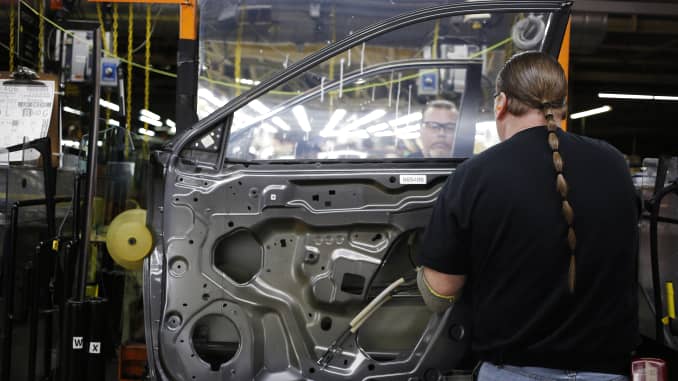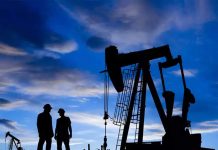KEY POINTS
- The U.S. Consumer Price Index for April rose 4.2% from the same period last year, its sharpest rise since 2008.
- The readings triggered sell-offs across global stock markets, as investors feared that the surge in inflation could prompt the Federal Reserve to alter its accommodative monetary policy stance.
- Fed officials have repeatedly suggested that along with inflation, employment will also have to pick up in a substantial and sustainable fashion before policy changes.
The concentration of price pressures in a handful of categories means markets shouldn’t yet be worrying about inflation after Wednesday’s U.S. surprise, economists have told CNBC.
The U.S. Consumer Price Index for April rose 4.2% from the same period last year, its sharpest rise since 2008, while the monthly climb in core inflation, which excludes volatile food and energy prices, was the fastest since 1981.
The readings triggered significant sell-offs across global stock markets, as investors feared that the surge in inflation could prompt the Federal Reserve to alter its accommodative monetary policy stance.
Used car and truck prices, seen as a key inflation indicator, surged 21%, including a 10% increase in April alone. Airlines and shelter also featured heavily due to the sudden upswing in demand as travel restrictions were lifted.
The automotive industry has been hamstrung this year by a global shortage of semiconductors which has led major carmakers to cut production. Nissan on Thursday became the latest to announce that it would make half a million fewer cars in 2021 due to the shortage. The used car price spike has been attributed to the knock-on effect from this crisis.
“It’s not inflation but it is a legitimate supply problem, and every new car that’s not sold is a used car that’s not created,” said Carl Weinberg, chief economist at High Frequency Economics.
“At the same time, the rental agencies are jumping to the used car market because they can’t get new cars either, so we have a shift in demand to the right and upward and a shift in supply at the same time to the left and that’s causing the rise in prices,” he added, noting that this did not constitute inflation.
Weinberg also noted, in line with the position of many Fed officials, that the sudden shift from total shutdowns of the services sector to a more balanced distribution of price pressures across the economy would eventually stabilize inflation.
“We are seeing transient shocks, bottlenecks along the way as we get back up to speed, and everything ultimately will settle down,” he added.
Marco Valli, head of macro research and chief European economist at UniCredit, also told CNBC that the Italian lender believes the inflation spike to be temporary, but admitted that Wednesday’s numbers had caused “a bit less confidence” in that projection.
Noting the concentration of price pressures in categories directly affected by supply problems in the automotive industry or the reopening of the services sector, Valli suggested the Fed would need to see much broader and more sustained inflation. However, he predicted that the currently robust price growth would likely continue for several months.
“The risk has increased, but we also think it is transitory and to understand where this is really going to get concerning for the Fed, you really have to look at the broadness of the categories of price increases that you see,” Valli said.
Further data from the U.S. Bureau of Labor Statistics on Thursday showed that the Producer Price Index (PPI) spiked 6.2% year-on-year in April, the largest increase since the agency started tracking the data in 2010.
Inflation surge the ‘least bad outcome’ for the Fed
Fed officials have repeatedly suggested that along with inflation, employment will also have to pick up in a substantial and sustainable fashion before policy changes.
Weinberg suggested that the employment rate is in fact the priority for the central bank, with a higher-than-desirable inflation rate a price it would be willing to pay.
“Is the problem inflation, is that the biggest risk right now, or is the problem sustained unemployment, which could force the government into subsidizing people’s incomes for an unaffordable period of time or leading to a crash?” he said, adding that this is the scenario the Fed is most committed to avoiding.
“So if it is going to take some inflation risk along the way, that may not be the best possible outcome, but it’s certainly the least bad outcome, rather than risking continued runaway unemployment.”



























